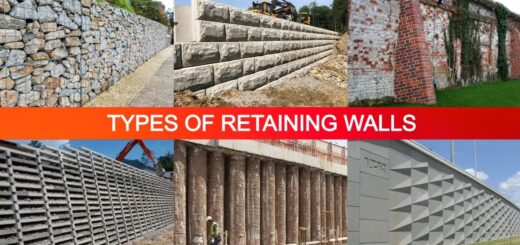15 Types of Pipelines – Uses, Advantages & Disadvantages [Explained with Details]
![15 Types of Pipelines - Uses, Advantages & Disadvantages [Explained with Details]](https://engineeringlearn.com/wp-content/uploads/2023/01/Pipelines-1024x539.jpg)
Introduction
15 Types of Pipelines – Uses, Advantages & Disadvantages [Explained with Details]: – A pipeline is a system of pipes designed to convey fluids like oil, natural gas, or other petrol-based products over long distances, frequently underground. It is a vital part of modern civilization that has now been utilized for centuries for the movement of water.
Pipelines regularly cost more than roads or open channels. It requires years and requires many surveys and studies and plans to be completed to foster a comprehensive plan that addresses the cultural, formative, ecological, and security considerations important to build the pipeline.
In any case, they can offer reductions in cost in view of more limited and more direct routes than roads or open channels. Construction and development of pipelines, particularly for large-scale water-supply or petroleum projects, are huge multi-disciplinary activities that include the investment of a large amount of cash and different assets.
Different Components Used in Pipelines
A pipeline is a framework that comprises pipes, fittings (valves and joints), pumps (blowers or compressors on account of gas pipelines), booster stations (i.e., transitional pumping stations put along the pipeline to house pumps or blowers), storage facilities associated to the pipe, intake and outlet structures, flow meters and different sensors, automatic control equipment including PCs, and a communication system that utilizes microwaves, cables, and satellites.
Sponsor or Support stations are required solely for long pipelines that require more than one pumping station. The distance between booster stations for large pipelines is on the order for 50 miles. Special pipelines that transport cryogenic fluids, like liquefied natural gas and liquefied carbon dioxide, should have refrigeration frameworks to keep the fluid in the pipe beneath critical temperatures.
Process of Construction of Pipelines
Construction and development of pipelines involve route survey, dumping or digging, transporting the pipes, fittings, and different materials to the site, stringing the pipes on the trench, bending steel pipes in the field to suit local topography, applying coating and wrapping to steel pipes, combining pipes together either before or after they are lowered into the trench (this relies upon the kind of pipes utilized), checking for possible welding imperfections or leakage at the joints, and afterward covering trenches by soil and restoration of the land to its unique appearance.
For long pipelines, construction and development are done in segments with the goal that one segment of the pipeline is completed before construction proceeds to the next. This limits or minimizes the time that any given place is disturbed by construction and development activities. In any event, for large pipelines, construction for any segment is typically completed in something within the half a year and frequently in significantly less time.
Different Types of Pipelines
A) Based on Pipe Manufacturing Material
Selection and choice of materials for pipes depends on the design of the pipeline, interior and external forces, jointing and laying techniques, strength, impermeability, and the recurrence of maintenance.
1. Cast Iron Pipeline: ( Types of Pipelines )
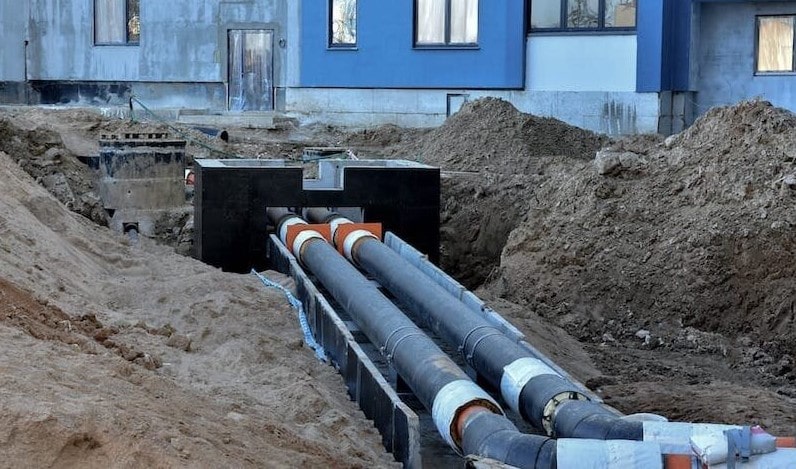
Cast iron pipelines are generally produced from gray cast iron for which coatings and linings are applied to further improve corrosion resistance. These kinds of lines have been broadly utilized in the past.
Notwithstanding, today, ductile iron pipelines which are better than cast iron pipelines are by and large generally utilized. Such a pipeline type is reasonable for the transmission of water, gas, and sewage.
2. Steel Pipeline: ( Types of Pipelines )
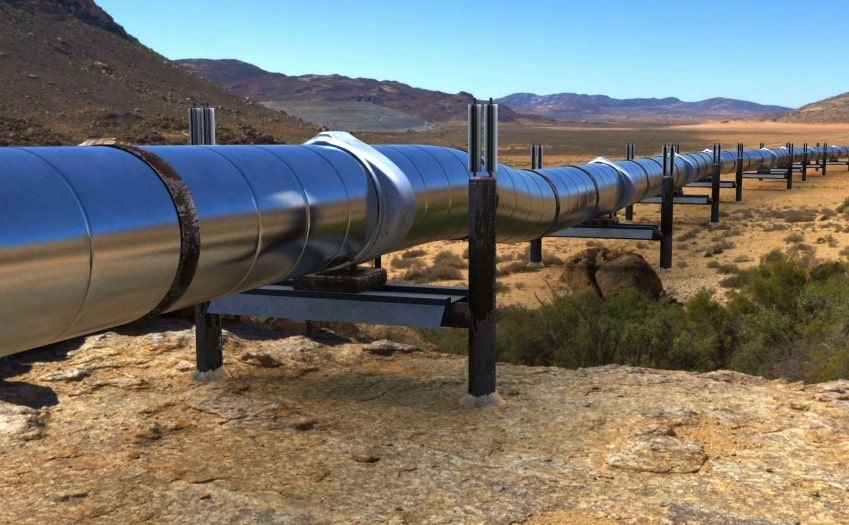
Steel pipes are utilized for the water pipelines. Large diameter and measurement pipes can be manufactured from steel and can be reached out over large distances.
3. Plastic Pipeline: ( Types of Pipelines )
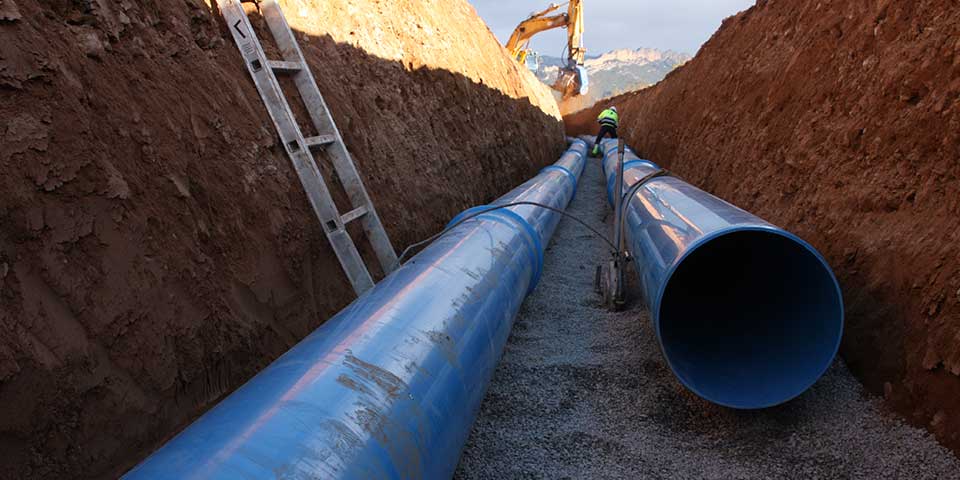
It is for the most part utilized for the transmission of water over long distances. Plastic pipelines have incredible resistance to abrasion, and chemical impact and are not difficult to deal with. Added to that, their light weight makes it simple for the workers to lay and adjust according to the need. Be that as it may, they have low tensile strength and show poor performance during temperature fluctuation.
4. Concrete Pipeline: ( Types of Pipelines )

Concrete pipelines are manufactured from welded sheet steel with jointing surfaces and cement. It is especially suited to large-diameter pipelines extending over significant distances. Concrete pipes are an appropriate decision or choice for the transmission of water. Concrete pipes are regularly wide in diameter, and construction workers or laborers lay them out over overstretched distances. Their best use is for water transportation over long distances, despite the fact that they can transport different liquids.
The incredible thing about concrete pipelines is that they can endure above 100 years, thus once installed, there is little requirement for worries of failures or extensive support and maintenance.
B) Based on Pipe Function
1. Transmission Pipeline: ( Types of Pipelines )
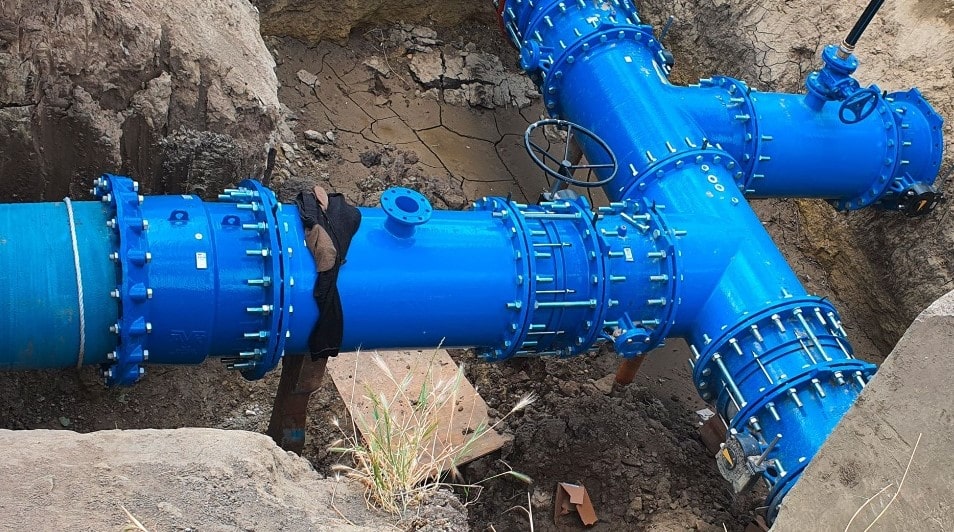
Shipping unrefined petroleum or crude oil, NGLs, natural gas, and refined products for long and significant distances across countries and continents is utilized. Transmission pipeline sizes are generally greater than 25.4cm (10inch). corrosion, defective or flawed welding, Seam failure, and material failure are common causes of transmission pipeline damage.
2. Collection Pipeline: ( Types of Pipelines )
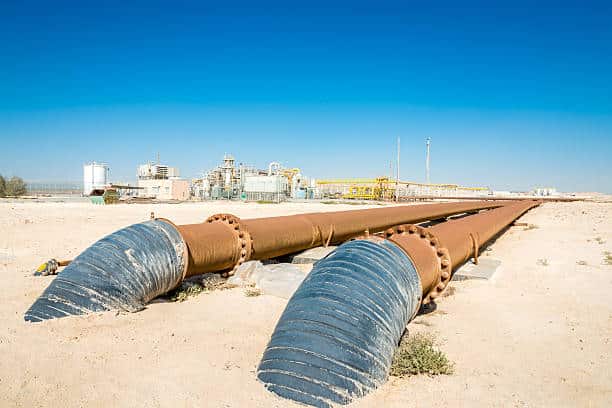
Collection pipelines convey oil or gas products from the wells in the ground to the oil batteries or petroleum gas processing center. Their diameter varies from 101 mm to 304 mm.
3. Distribution Pipeline: ( Types of Pipelines )

Shipping natural gas to homes and businesses is utilized in distribution pipelines. The size of distribution pipes ranges or varies from 12.7 mm to 152.4 mm.
C) Based on Substance Transported
1. Water Pipeline: ( Types of Pipelines )
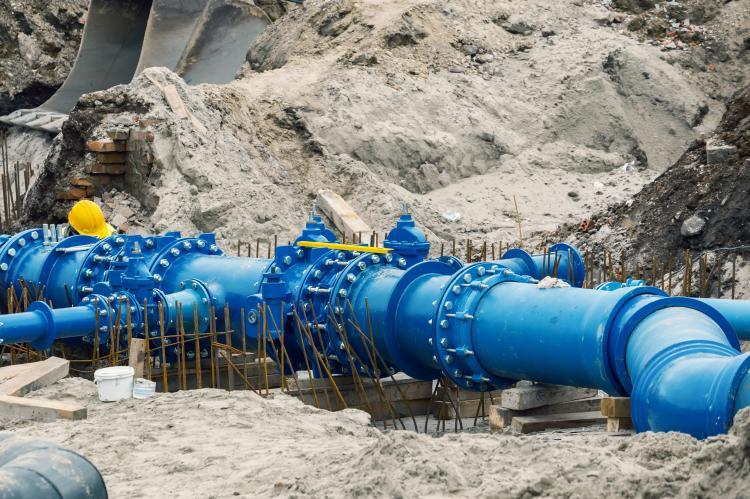
It is utilized to transfer water from treatment plants to buildings. By and large, such pipelines are installed underground a few meters underneath the cities and roads in light of the frost line of the location and the requirement for protection against accidental damage. These lines pipelines can be produced from steel, ductile iron, and cement.
2. Wastewater Pipeline: ( Types of Pipelines )
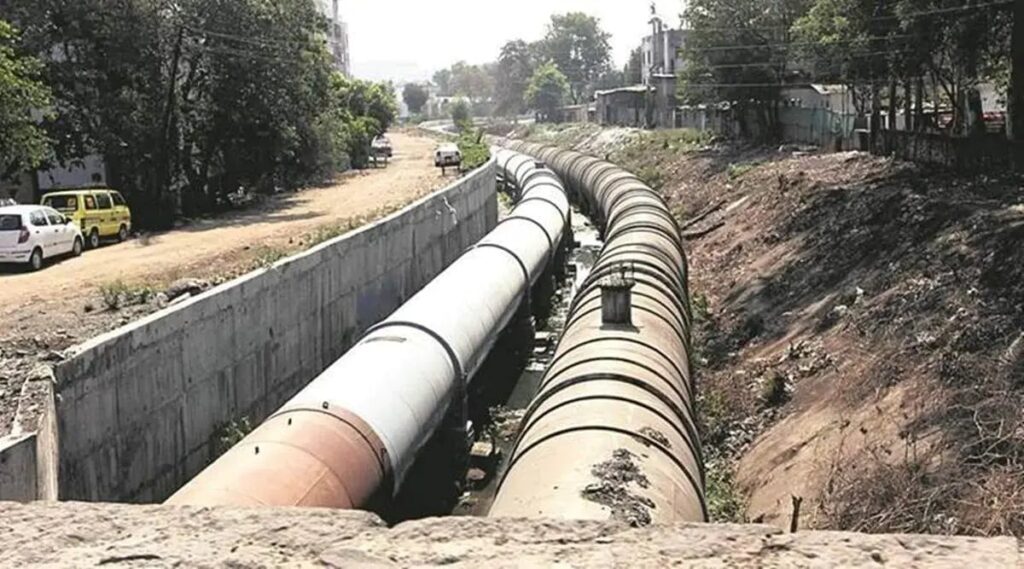
They are utilized to transport wastewater which is composed of a high percentage of water and a small percentage of solid or strong wastes. These pipes can be produced from concrete, PVC, cast iron, or clay in view of the pressure in the pipe and different circumstances. The sizes of the Pipe are constrained by the sort of materials and pressure in the pipe.
3. Gas Pipeline: ( Types of Pipelines )
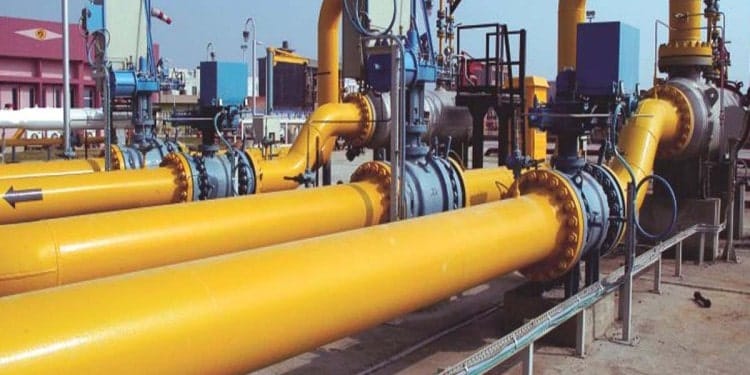
Pipelines are the only practical means of transportation of natural gas over land since different strategies, for example, trucks and trains are considerably expensive. Gas collection and transmission lines are made of steel while most distribution lines utilize flexible plastic pipes, which are not difficult to lay and don’t corrode.
To transport natural gas by different modes like truck, train, or barge would be more perilous and costly. While gas collection and transmission lines are made of steel, most distribution and conveyance lines (for example more smaller lines interfacing from the main or transmission lines to clients).
4. Petroleum oil Pipeline: ( Types of Pipelines )
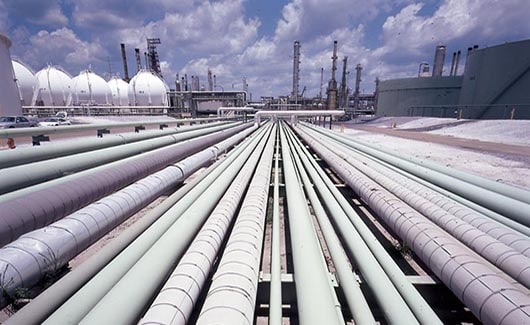
It is manufactured from steel for which outside coating and cathodic protection are applied to decline outer corrosion. Oil pipelines are joined together by welding. There are two kinds of oil pipelines, to be specific: crude oil pipeline-which transports crude oil to refineries, and product pipeline-that conveys refined products like gasoline to the market. Different grades of refined products or different refined products are normally transported through the similar pipelines in various batches. Blending between batches is small and can be controlled.
This is accomplished either by utilizing large clusters (long segments of a similar oil or product) or by placing an inflated elastic sphere or ball between batches to separate them. Crude oil and some oil-based products moving through pipelines frequently contain a small amount of added substances to lessen internal corrosion of pipes and decline energy loss. Oil pipelines only use steel pipe without lining but with an outer coating and cathodic protection to minimize external corrosion.
5. Slurry Pipeline: ( Types of Pipelines )
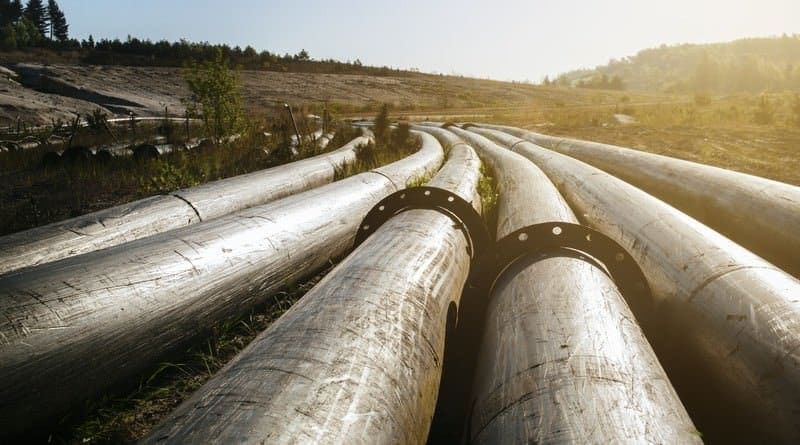
The mining industry and dredging use slurry pipelines. The slurry is a combination of solid particles and a liquid, generally water. The particles can range in size from more noteworthy than four inches in equivalent diameter to less than one-thousandth of an inch. At the point when the solid particles in the liquid are small and finely ground, the combination is called fine slurry, and when the particles are larger, it is called coarse slurry.
Generally, the mining industry has utilized pipelines to transport mine wastes and tailings in slurry form to disposal or removal sites, using water as the fluid. Dredging additionally utilizes a slurry pipeline. The sand, gravel, or soil dredged from a river is frequently pumped with water through a pipeline to a building or construction site for a distance of up to a few miles.
6. Alcohol Pipeline: ( Types of Pipelines )
These are not so common pipelines, yet there are some alcohol pipelines in some countries. The main concern with shipping or transporting alcohol is that it’s a corrosive substance. Also, there can be some impurities in the pipelines that can influence or affect the alcohol whenever it’s delivered. Initially copper pipes were utilized – which is an optimal material for transporting beer due to its anti-microbial properties.
7. Pneumatic Pipeline: ( Types of Pipelines )
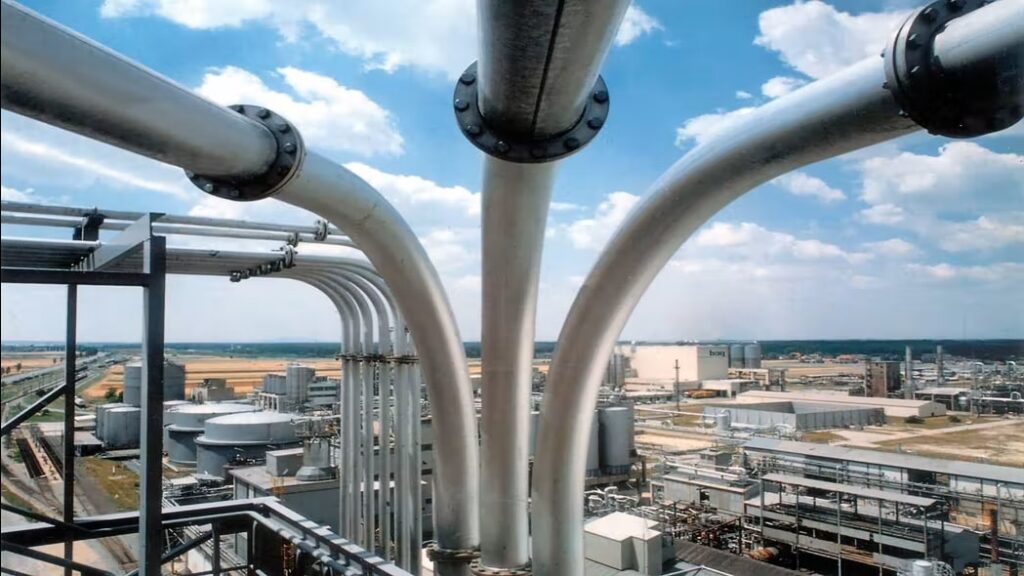
Pneumatic pipelines, additionally called pneumo transport, transport solid particles involving air as the carrier medium. Since air is free and exists all over the place, and on the grounds that it doesn’t wet or react chemically with most solids, pneumo transport is preferred to hydro transport for most cargoes in any place the transportation distance is short. Owing to high energy consumption and abrasiveness to pipes and materials, pneumatic pipelines are normally adopted for distances, not in excess of a couple of hundred feet or meters.
Large-diameter pneumatic pipelines can be utilized economically for longer distances, at times in excess of a mile or a kilometer. There are two general types of pneumatic pipelines. The first utilizes suction lines, which make a pull or vacuum in the line by placing the compressor or blower close to the downstream end of the line. The line operates like a vacuum cleaner. The subsequent type is pressure lines, which have compressors or blowers located close to the upstream end. This makes or creates a pressure in the line that drives the air and the solids through the pipe.
Pressure lines are utilized for longer distances and where solids concentrated at one location are transported to a few separate locations utilizing a solitary blower or compressor.
8. Capsule Pipeline: ( Types of Pipelines )
Capsule pipelines transport cargo in capsules propelled by a fluid moving through a pipeline. Unequivocally or precisely when the fluid or liquid is air or another gas, the advancement is called pneumatic capsule pipeline (PCP), and, when water or another liquid is used, it is named hydraulic capsule pipeline (HCP). Owing to the low density of air, capsules in PCP can’t be suspended via air at ordinary speeds. All things being equal, the capsules are wheeled vehicles rolling through pipelines.
Advantages of Pipeline
- They are ideally suited to move or transport liquids and gases.
- Pipelines can be laid through difficult territories as well as underwater.
- It includes extremely low energy consumption.
- It needs next to no maintenance.
- Pipelines are safe and secure, accident-free and ecological, and environment friendly.
Disadvantages of Pipeline
Following are the principal disadvantages of pipeline transport:
- It isn’t flexible, i.e., it tends to be utilized exclusively for a few fixed points.
- Its capacity can’t be increased whenever it is laid.
- Making security plans for pipelines is troublesome.
- Underground pipelines won’t be quickly fixed and detection of leakage is additionally troublesome
- There are various types of pipelines characterized based on manufacturing material, transported substance, and function of the pipes.
Safety Parameters of Pipelines
The safety and security of pipelines depend generally on the materials transported. Pipelines that transport water or use water to transport coarse solids, like hydraulic capsule pipelines, don’t explode or pollute the environment in case of a pipe bursts or spills. They pose a few safety or security or environmental hazards. Raw petroleum pipelines, when ruptured, don’t explode however may pollute waters and soil.
Natural gas pipelines and product pipelines that contain highly volatile liquids, for example, gasoline; may explode in a spill. Indeed, even for this situation, nonetheless, it is by and large acknowledged that the most secure method for shipping petrol and flammable gas is by pipeline. To utilize different modes, for example, trucks or railroads to transport such fuel would be undeniably more hazardous and costly.
Conclusion
Eventually, engineers can utilize a vast range of options to build complex or exceptionally simple pipelines to serve specific requirements. Nowadays, anything that flows or that is in gas structure can be transported utilizing pipelines. We ought to likewise say that the various types of pipelines accessible are everlastingly developing, as material researchers develop new materials that can more readily uphold the transport of specific substances. The environmental effects can’t be avoided completely, only reduced. Albeit these issues are all concerning, many people are concerned and worried with rupture in a pipeline and a spill.
Content Source: – theconstructor, britannica, yourarticlelibrary
Image Source: – americanpipelinesolutions, pond5, pvc4pipes, mswmag, avkvalves, istockphoto, dnv, pipeline-journal, indianexpress, journalsofindia, heliumleakdetection, cablecommunity, powdertechnology


